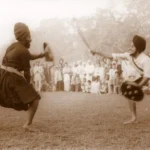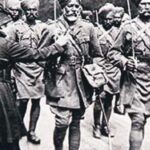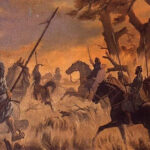What do Sikhs do really wear? The cultural attire of Sikhs mens and women dates back centuries. The Sikh code of conduct specify the kachhera wearing and a turban for all Sikh males, allowing Sikh females the alternative to wear a headscarf to cover up the hair. The name for such cultural spiritual outfit is bana.
Bana is the word for the cultural Sikh spiritual attire. Numerous Sikhs be clothed in ceremonial bana when attend ceremonies and worship festives at the gurdwara, or during occasions and offs. Very devout Sikhs probably wear bana of cultural colors each day.
A chola is the name of a particular type of bana threadbare culturally by Sikh warriors. It is a type of robe or dress which has a huge flared skirt made with panels to permit for freedom movement. A popular tale tells how Guru Har Rai, snag his chola on the rose bush, and the class of self-mastery it necessitate.
Sikh women’s wear is Salvar Kamees. Salvars are loose baggy fit on pants with ankle cuffs signify as ponche. It is threadbare beneath the kamees, a dressing top which is reachable in as numerous styles as there is imagination color, often embellished with ornamentation. The salvar color and kamees might matching or contrast. They are worn with contrasting chunni or color coordinated matching or dupatta. The very devout tend to wear solid colors or plain prints with a small embroidery, as an humility expression.
In addition to the necessary kirpan, different kind of Shastar armament probably adorn cultural Khalsa warrior attire. Siri Sahib is a word of respect put in to a substantial kirpan. A chakar is often utilized to embellish a turban. A gurj is a type of spiky mace historically utilized in battle and threadbare at the waist. A singh probably do carried a teer in the format of a formal spear or the arrow.
Sikh men’s wear is the Kurta pajama. A Kurta is a kind of huge tailored shirt with pockets side slits. It might having a straight or rounded hem and straight boundary cuffs. The pajama is a baggy pant often build up of fabric to match up the kurta. The very devout wearing plain styles in solid colors to demonstrate humility.
The Kurti is customary casual dress worn by both women and men. Fabrics include all synthetic and cotton stuff. Styles carry different lengths from just above the knee. Sleeves could be full length, three-quarters, short and half sleeve. Men’s kurti tend to be hatched, prints, striped, plain white, and solid colors. Women’s kurti range from solid colors to plain white with contrast embroidery often along with multi-colored prints and patterns.
The hajoori neckcloth might be a turban stuff tiny strip or other excellent fabric about yards in lengthen. It might be from the full width of turban veil. It is commonly white, but might occasionally be orange. It is worn by most katha and ragis performers on stage at gurdwara festive occassions. It is worn by Nihang warriors and numerous Singhis or Singhs who sing kirtan. It is also worn while read on religious path, serving and preparing prasad and langar. It’s either held to loosely and wrapping cover the mouth.
The kakar are the five blogs of faith:
• Kachhera – Baggy undergarment
• Kanga – Wooden comb
• Kara – Iron Bangle
• Kes – Unshorn hair
• Kirpan – Ceremonial short sword
A Sikh is needed to keep the things on the body at all the timeline, night and day, neverthless of situations.
In addition to the essential kirpan, various kind of Shastar weaponry might decorate cultural Khalsa warrior dress. Siri Sahib is a respect term apply to the considerable kirpan. A chakar is utilized to decorate a turban. A gurj is a type of spiky mace historically utilized in battle and worn out at the waist. A singh may also carried a teer in the format of a formal javelin or an arrow.
The Sikh turban is shabby in a diversity of styles. Wanted wear for the Sikh man, a turban is alternative for the Sikh woman who might select instead over a turban or wear out a scarf, alone.
Turban styles
• Domalla – 10 or more yards Dual length turban
• Pagri – Dual width turban of six to five yards
• Dastar – A pick out turban of six to four yards
• Keski – A small turban of three to two yards
• Patka – A square of half to one yard tied over the top knot (joora) and head
• Fifty – A half yard well worn beneath turban
Scarf styles:
• Chunni – A utter lightweight veil of up to two and half yards
• Dupatta – A double-wide cloth veil of up to two and half yards
• Ramal – triangular and Square head cover








